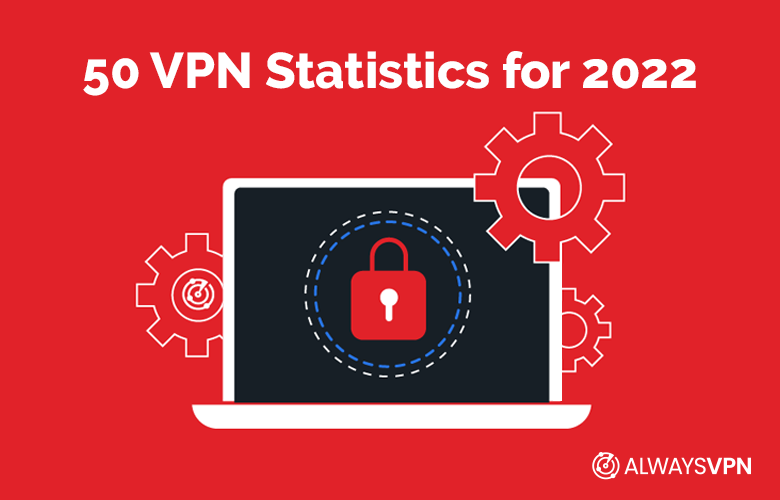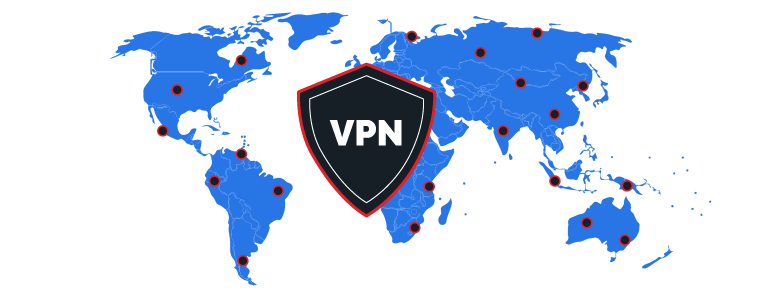October 4, 2021
Best Privacy Tools of April 2025: A Complete Guide
In the words of Edward Snowden in his memoir Permanent Record: “ Saying that you don't care about [...]

WHAT’S IN THIS REVIEW?
Disclaimer: Partnerships & affiliate links help us create better content. Learn how.
This year alone, VPN usage has increased drastically, many services have vastly improved, and the online privacy industry has grown into a massive revenue generator.
To get the full scoop on the current state of the VPN industry, we did some digging. Here is a combination of the most important statistics, key trends, and data surrounding VPNs as it relates to everything from rising cybercrime to the providers themselves.

COVID-19 has been on the agenda for a couple of years, with many businesses suffering due to the impact of lockdown restrictions and other economic factors during the early stages of the pandemic. Of course, VPNs were largely free of these issues, especially as growing numbers of users flocked to their services as they spent increasing amounts of time at home.
We’ll begin with facts and stats surrounding VPN usage and COVID-19.
VPN usage in the United States surged during the coronavirus crisis, increasing 124% during the two weeks between March 8 and March 22, 2020. This increase was also seen elsewhere, including Italy (175%), Spain (62.1%), and Germany (48.4%). (Statista, 2021)
It’s worth mentioning that Italy and the US were the two regions most affected by the virus during this period in 2020. Therefore, COVID-19 played a major role in the increased adoption rates of VPNs.
COVID-19 has increased VPN usage for criminal elements and normal users alike. An increase of over 100% in the US is also notable, especially as it’s one of the bigger markets worldwide. VPN adoption rates have slowed ever so slightly, but traffic is still up significantly compared to pre-lockdown rates.
For added context:

Cybercrime is always a worrying prospect and has only been exacerbated during the COVID-19 crisis.
Europol has been working with a number of international law enforcement authorities to combat VPNs being used in support of serious criminal acts such as ransomware deployment and other cybercrime activities,” like VPN Lab.
The head of Europol’s EC3, Edvardas Šileris, said:
“Law enforcement is most effective when working together and today’s announcement sends a strong message to the criminals using such services: the golden age of criminal VPNs is over. Together with our international partners, we are committed to getting this message across loud and clear.”
With that in mind, here are stats relating specifically to VPNs and cybercrime in 2022.
Fraud is increasing at a rate unseen, fuelled by faster internet speeds and a changing global climate.

Cybercriminals target businesses as well as individuals, which makes sense considering the large sums of money at stake. Here are further cybercrime stats that relate to VPNs and businesses around the world.
VPN use is also increasing for businesses according to recent stats. For example:
We generally focus on commercial VPNs, but the majority are used for business, especially as many office workers have semi-permanently switched to a home environment.

Who keeps an eye on the providers? The VPN industry is growing by almost every imaginable metric, so what are the key stats for this 2022? Let’s take a look.

What about us, the VPN users who make up a significant segment of the online space? Here’s what we discovered:
Roughly 64% of people who claim to use VPNs everyday are logging in via their smartphone. (DataProt, 2021)
“VPN hardware captured more than 35% share of the European market in 2020. Customers are opting for internet-powered devices and virtual traffic is growing at an exponential rate every year.”
Security.org (North America Virtual Private Network (VPN) Market Forecasts 2027) , 2022
Research shows that virtual private networks (VPNs) were significantly featured in terms of global app downloads in Q3, accounting for 6 of the top 10 non-game apps with the most significant increase in worldwide downloads between July and September 2021. (DataReportal, 2021)

Considering the stats and data above, we’ve listed a number of insights relating to the various findings.
The best VPN providers do share some commonalities, but it will depend on what you’re planning to use the service for. Here’s a quick roundup of our Editor’s Top Picks for 2022.
Privacy might not be the most important aspect for the average user, but NordVPN also has a massive list of high-speed US servers and airtight encryption. It’s also reliable and offers connection speeds that are often unmatched.
CyberGhost has a powerful server network and is also one of our top picks for streaming content. It’s fast, secure, and easy to use, and you’ll also be able to use torrents freely.
IPVanish is a solid VPN service that, for the most part, has garnered significant trust from users. It’s our top pick for security overall, deploying industry-leading AES-256 encryption and offering a host of advanced security features.
Surfshark is very affordable as far as premium VPNs are concerned and has VPN servers that support P2P traffic Surfshark unblocks Netflix and also allows unlimited device connections per subscription. Their no-logs policy is verified by Cure 53, and it’s a great choice for gaming enthusiasts looking to up their connection performance.
WHAT’S IN THIS REVIEW?
| Cookie | Duration | Description |
|---|---|---|
| __cfduid | 1 month | The cookie is used by cdn services like CloudFlare to identify individual clients behind a shared IP address and apply security settings on a per-client basis. It does not correspond to any user ID in the web application and does not store any personally identifiable information. |
| cookielawinfo-checkbox-advertisement | 1 year | The cookie is set by GDPR cookie consent to record the user consent for the cookies in the category "Advertisement". |
| cookielawinfo-checkbox-analytics | 1 year | This cookies is set by GDPR Cookie Consent WordPress Plugin. The cookie is used to remember the user consent for the cookies under the category "Analytics". |
| cookielawinfo-checkbox-necessary | 1 year | This cookie is set by GDPR Cookie Consent plugin. The cookies is used to store the user consent for the cookies in the category "Necessary". |
| cookielawinfo-checkbox-non-necessary | 1 year | This cookie is set by GDPR Cookie Consent plugin. The cookies is used to store the user consent for the cookies in the category "Non-necessary". |
| cookielawinfo-checkbox-performance | 1 year | This cookie is set by GDPR Cookie Consent plugin. The cookie is used to store the user consent for the cookies in the category "Performance". |
| viewed_cookie_policy | 1 year | The cookie is set by the GDPR Cookie Consent plugin and is used to store whether or not user has consented to the use of cookies. It does not store any personal data. |
| Cookie | Duration | Description |
|---|---|---|
| cookielawinfo-checkbox-functional | 1 year | The cookie is set by GDPR cookie consent to record the user consent for the cookies in the category "Functional". |
| cookielawinfo-checkbox-others | 1 year | No description |